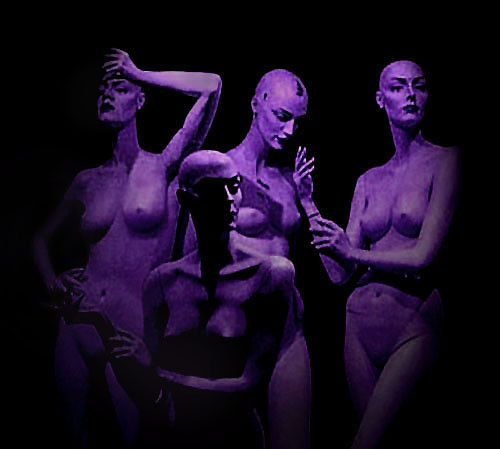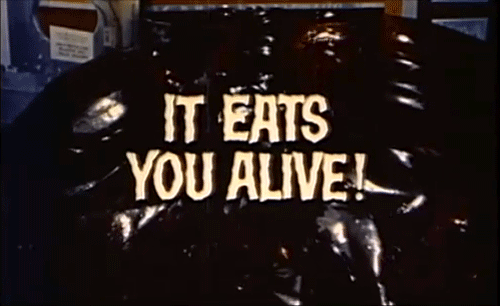The
spooky soundtrack of the
Monster Craze period (on which a
Tales campaign is based) emphasizes cars and drag racing nearly as much as rock-n-roll and dancing. Several famous monsters -- notably
Count Dracula -- are depicted in song as being obsessed with cars and racing. Thus, any good
Tales campaign should feature copious opportunities for PCs to race for pinks against monsters, or straight-up engage them in demolition-derby-style vehicle combat.
The following house rules are intended for use with LotFP, but can be easily ported to other OSR games based on early versions of "the original roleplaying game." For systems not using LotFP's "x in 6" skills system, just substitute Dexterity ability checks for Driving skill.
Credit where it's due: I adopted much of these rules from David Baymiller's excellent work at The OSR Library.
Classy Chassis -- Basic Vehicle Body Types
For simplicity's sake, there are six different kinds of gasoline-powered ground vehicles that PCs will commonly encounter: motorcycles, roadsters, town cars, pick-up trucks, small freight trucks, and large freight trucks. Hot-rodders usually drive modified roadsters, town cars, or pick-up trucks, while motorcycles are the focus of their own subculture.
Each vehicle type has a base AC, hit points, speed in MPH, and number of passengers, detailed in the table below.
|
Vehicle
|
Armor Class
|
Hit Points
|
1 Driver +
|
Speed (MPH)
|
|
Motorcycle
|
As leather
|
20
|
1 passenger*
|
100
|
|
Freight Truck, Lg
|
As chain
|
60
|
2 passengers
|
60
|
|
Freight Truck, Sm
|
As chain
|
50
|
2 passengers
|
60
|
|
Pick-Up Truck
|
As leather
|
40
|
3 front, 6 bed
|
60
|
|
Roadster
|
As leather
|
35
|
1 passenger
|
115
|
|
Town Car
|
As leather
|
45
|
4-7, or 2 + coffin
|
70
|
*Motorcycles can add an additional passenger w/use of a
sidecar
Closed-cabin vehicles grant drivers and passengers 75% cover (+7 to AC in LotFP rules) during person to person combat. Open-cabin vehicles grant 50% cover (+4 to LotFP AC).
Characters on motorcycles use the rules for mounted combat (+1 to LotFP AC, +1 to hit vs. targets on the ground).
Vehicles & The Driving Skill
Driving is a skill like any other in LotFP; all characters have a default 1 in 6 chance to accomplish tricks or special maneuvers. (If not using LotFP, simply substitute a Dexterity check.) Specialist characters can add their skill points to the Driving skill as normal.
Normal, daily-business driving does not require a skill check. The skill only becomes relevant during special circumstances -- chases, combats, races, and/or stunt driving.
In such cases, a non-Specialist driver can add his or her Dex bonus to their base chance of success, to a maximum of 4 in 6 (from a +3 Dex bonus)... but
only if he or she has a higher initiative than the driver opposing them.
Specialists with points in Driving can add their Dex bonus, as well, even if they do not have a better initiative than their opponent.
The listed Speed for each vehicle is its functional maximum speed. A driver can handle the vehicle safely (without the need for additional Driving skill checks) at half this speed, rounded up. If moving greater than this speed, the driver of the vehicle suffers a penalty on all Driving skill checks based on how much greater than half-speed the vehicle is traveling. The penalty is -2 if moving between 50% and 75% of maximum functional speed. If moving between 76% and 100% of max functional speed, the penalty rises to -4 (to a minimum of 1 in 6).
It is possible for a driver to push his or her vehicle 20 MPH beyond its maximum functional speed, but doing so comes at the price of mechanical stress (and possible damage) to the vehicle and further difficulty in handling. The driver's chance of success on all Driving skill checks drops to 1 in 6 if it has not already done so, and for every 5 rounds of movement at greater than maximum speed, the driver must roll an additional 1d6. A result of 1 or 2 on this roll means the engine has been damaged, and the driver must now make a Driving skill check at 1 in 6 or suffer a crash and its consequent collision damage to both vehicle and occupants.
A failed Driving check has a serious consequences: the vehicle will either
skid or
spin (50% chance), and if moving at 30 MPH or more, also has a chance of
rolling at the end of its skid or spin.
Skid: The vehicle moves a distance equal to 1/2 its current MPH in feet. At the end of this skid, the driver makes a Driving skill check at -2 penalty (to a minimum of 1 in 6) or the vehicle comes to a complete stop... unless it was traveling more than 30 MPH. In this case, a failed Driving check causes the vehicle to
roll. Any collision resulting from a skid inflicts collision damage as normal (see below).
Spin: The vehicle spins wildly for the rest of the round, and ends up facing a random direction (roll 1d8) relative to its original trajectory. The driver makes a Driving skill check at -4 (to a minimum of 1 in 6). If successful, he or she can continue moving the vehicle in whichever direction it is now facing. If the check fails, the vehicle
skids to a stop, as above, but now facing its new direction. As above, if the vehicle was traveling more than 30 MPH when it entered the spin, a failed Driving skill check at the end of the spin sends the vehicle into a
roll. Any collision resulting from a spin inflicts collision damage as normal (see below).
Roll: The vehicle rolls in a straight line for a number of feet equal to its current MPH x 1d6. Damage to the vehicle and its occupants is calculated as per normal collision damage (see below), but the roll inflicts an extra 2d6 (total damage to occupants is calculated after all damage is rolled).
Demolition Derby! -- Vehicle Combat
Combat or races between vehicles begin with a normal initiative check, but the roll is made by whichever character is driving the vehicle. If group initiative is not being used, passengers in the vehicle act on their own initiative, as normal.
During a combat or race round, a vehicle moves 10 ft. per its current speed in MPH (thus, a car going 50 MPH moves 500 ft. during a round). Challenges that appear during this movement -- barricades, holes, other traffic, pedestrians, animals or monsters in the road -- require further Driving skill checks to avoid. Failure on these checks incurs the consequences described above, and the damage described below.
The driver of a vehicle engaged in combat with another vehicle adds his or her Dex bonus to their own vehicle's AC. Vehicle AC is improved by a further +1 per 20 MPH of movement, but
only if the vehicle in question is traveling
across its attacker's path, not towards it or away from it.
Tires: Automobile tires have a base AC as leather, regardless of the AC of the rest of the vehicle, and can be popped with piercing or slashing attacks. Attacks against tires are at -4 to hit when the vehicle is in motion.
Each time a tire on a moving vehicle is popped, the driver must make a Driving skill check at -1 penalty per tire (to a minimum of 1 in 6) or crash the vehicle. Make this check every round until the vehicle stops.
Automobile Damage: A vehicle taken to 1/2 its hit points is so damaged that its driver is at -2 on all Driving skill checks.
Vehicles reduced to 0 hit points cease functioning altogether, and must be repaired or rebuilt before they can be used again.
Vehicles that collide with other objects take
and inflict 1d6 hp of damage per 10 MPH they are traveling at the time of impact. Creatures inside the vehicle suffer 1/2 of this total damage. Objects struck by the vehicle suffer the same damage as the vehicle itself.
Creatures struck by the vehicle take the listed damage, but the vehicle in question only takes 1d6 damage.
If two vehicles hit each other head on, they each suffer the cumulative damage of both impacts. For example, a car traveling 30 MPH inflicts 3d6 damage, and a car traveling 50 MPH inflicts 5d6 damage. If these two cars collide head-on with each other, they both suffer 8d6 damage.
Vehicle Occupants During Combat: Attacking the occupants of another vehicle during vehicle combat is a normal ranged attack roll. The occupants' AC is their normal AC + cover bonus + the driver's Dex bonus.
Attacks between the occupants of different moving vehicles are made at no penalty if traveling across even surfaces. Rough terrain or other complications may impose penalties as the GM decides, however.
Occupants take normal damage from ranged or melee attacks made against them by the occupants of other vehicles. As noted above, they take 1/2 damage from all collisions (except sideswiping) and other catastrophes suffered by the vehicle in which they are traveling. This damage can be reduced by a further 25% by the use of a seat belt.
Ramming: If two vehicles are attempting to ram each other, the drivers of both make normal ranged attack rolls at +4 bonus. If both drivers succeed but do not tie, the driver who rolled lowest takes the normal damage to their vehicle, and must also make a Driving skill check or enter either a skid or a spin, followed by a roll, if appropriate. If both drivers fail their attack rolls, nothing happens and their vehicles continue moving in their current directions.
If the drivers both succeed on their attack rolls
and the rolls are tied, then both vehicles suffer the appropriate damage, and both drivers must make skill checks or lose control of their vehicles.
Ramming another vehicle from behind has the following effect: subtract the target vehicle's MPH from the attacking vehicle's MPH, and the result is the number of d6 damage both vehicles suffer.
T-boning another vehicle inflicts the MPH damage of the ramming vehicle on both vehicles.
Sideswiping or grazing another vehicles inflicts 1d6 damage to each vehicle, but none to occupants. Forcing another vehicle off the road or into an obstacle is considered a ramming attack, as above.







